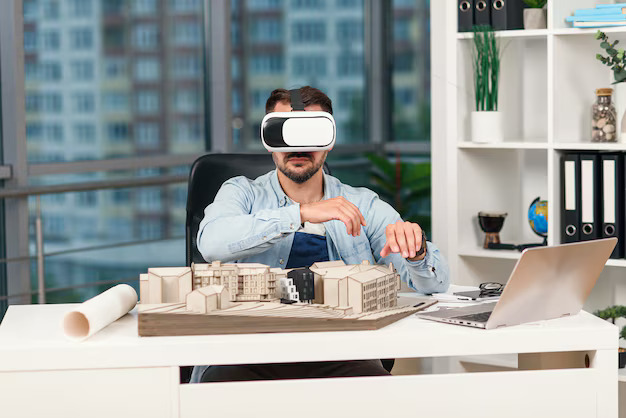
The Impact of Virtual and Augmented Reality on CAD
In the dynamic world of design and engineering, Computer-Aided Design (CAD) drawing programs have long been the backbone of innovation. As technology advances, the integration of Virtual Reality (VR) and Augmented Reality (AR) is transforming how professionals interact with these tools. This fusion is not only enhancing visualisation and collaboration but also redefining the design process itself.
Understanding VR and AR in the Context of CAD
Virtual Reality immerses users in a wholly digital environment, allowing them to interact with 3D models as if they were tangible objects. In contrast, Augmented Reality overlays digital information onto the real world, enabling users to view and manipulate virtual elements within their physical surroundings. When applied to CAD drawing programs, both VR and AR offer unique advantages that elevate the design experience.Enhancing Visualisation and Design Accuracy
Traditional CAD tools present designs on 2D screens, which can sometimes limit a designer's ability to grasp spatial relationships and scale fully. By incorporating VR, designers can immerse themselves in their models, walking around and through structures to assess proportions and aesthetics more intuitively. This immersive experience leads to a deeper understanding of the design, facilitating more informed decision-making. AR complements this by allowing designers to project CAD models into real-world settings. For instance, an architect can use AR to visualise a building within its intended environment, assessing how it interacts with existing structures and landscapes. This contextual visualisation aids in identifying potential issues early in the design process, reducing costly revisions later.Streamlining Collaboration and Communication
Effective collaboration is crucial in design projects, often involving multidisciplinary teams. VR and AR technologies enhance collaborative efforts by providing a shared immersive space where team members can interact with the CAD model simultaneously. This shared environment fosters better communication, as stakeholders can experience the design firsthand, discuss modifications in real-time, and reach a consensus more efficiently.Clients also benefit from this immersive approach. Instead of interpreting complex 2D drawings, clients can experience the proposed design through VR or AR, gaining a clearer understanding of the final product. This clarity reduces misunderstandings and increases client satisfaction.
Accelerating Prototyping and Reducing Costs
Integrating VR and AR into CAD drawing programs accelerates the prototyping phase. Designers can conduct virtual walkthroughs, identify design flaws, and make necessary adjustments before creating physical prototypes. This virtual prototyping save time and resources, as multiple iterations can be tested and refined digitally. Moreover, by detecting potential issues early, the reliance on physical prototypes decreases, leading to significant cost savings. Companies can allocate resources more efficiently, focusing on innovation and quality improvement. Additionally, the use of free CAD software and free CAD systems allows companies to experiment with virtual prototyping without incurring high software costs.Training and Skill Development
VR and AR applications extend beyond design and prototyping; they are valuable tools for training and skill development. Engineers and designers can engage in immersive training programs that simulate real-world scenarios, enhancing their proficiency with CAD drawing programs and understanding complex systems. For example, a trainee can practice assembling a virtual model using AR, receiving real-time feedback and guidance. This hands-on approach accelerates learning and ensures that team members are well-prepared to handle intricate design tasks.Many training institutions now offer courses that integrate CAD software free of charge, allowing learners to familiarize themselves with VR and AR-driven workflows.The Role of ALCAD in Integrating VR and AR
As a leader in CAD solutions, ALCAD is at the forefront of integrating VR and AR technologies into its drawing programs. By embracing these advancements, ALCAD empowers designers and engineers to explore their creations in immersive environments, enhancing precision and fostering innovation. ALCAD's commitment to incorporating VR and AR ensures that users can visualise designs in real-world contexts, collaborate seamlessly with stakeholders, and streamline the prototyping process. This integration not only enhances the user experience but also sets a new standard in the CAD industry.Challenges and Considerations
While the benefits of VR and AR in CAD are substantial, there are challenges to consider. Implementing these technologies requires investment in hardware and software, as well as personnel training. Additionally, ensuring compatibility between existing CAD programming software and new VR/AR tools can be complex. Data security is another critical consideration. As designs become more immersive and interactive, protecting intellectual property and sensitive information is paramount. Companies must implement robust security measures to safeguard their digital assets.The rise of free CAD systems has also introduced new concerns regarding data integrity and cybersecurity, making it crucial for businesses to use secure platforms.Future Perspectives
The integration of VR and AR into CAD drawing programs is still evolving. As technology advances, we can anticipate even more seamless and intuitive interactions. Future developments may include haptic feedback, allowing users to "feel" virtual objects, and more sophisticated AR applications that effortlessly blend the digital and physical worlds. The continuous improvement of VR and AR technologies will further enhance design accuracy, collaboration, and efficiency. With these advancements, companies can maintain a competitive edge in the ever-evolving design and engineering landscape.Conclusion
The fusion of Virtual and Augmented Reality with CAD drawing programs is revolutionising the design process. These technologies offer immersive visualisation, improved collaboration, accelerated prototyping, and advanced training opportunities. As a pioneer in this field, ALCAD provides innovative solutions that harness the power of VR and AR, empowering professionals to push the boundaries of design. Experience the future of design with ALCAD's VR and AR-integrated CAD drawing programs. Elevate your projects to new dimensions and stay ahead in the industry. To know more connect with today.